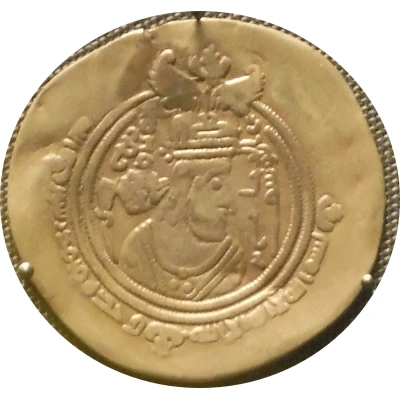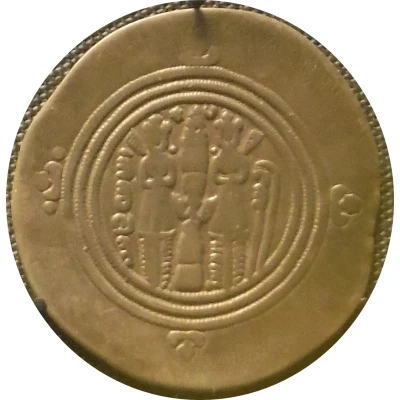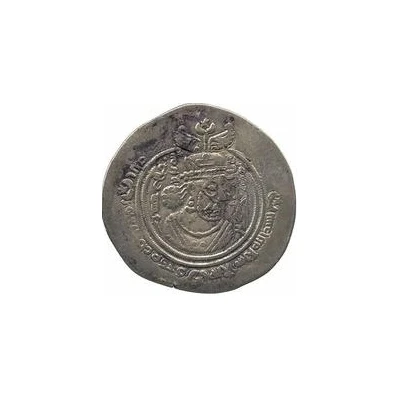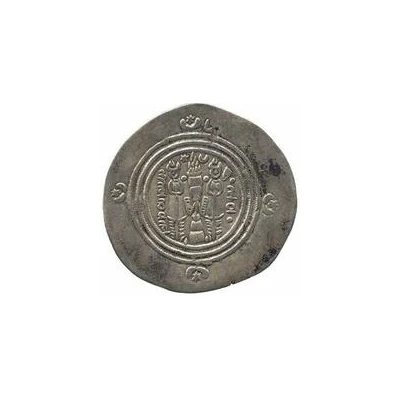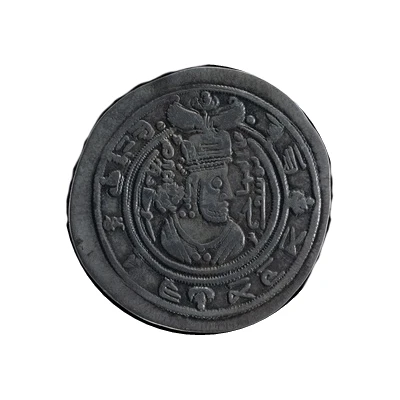
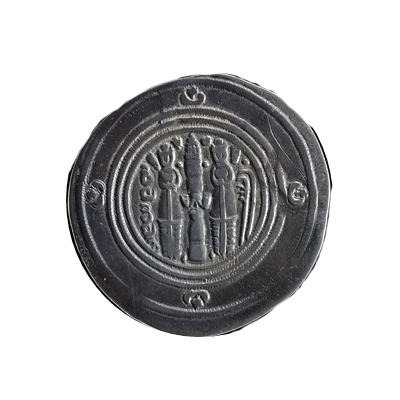

© A. H. Baldwin & Sons Ltd
Drachm - al-Hajjaj b. Yusuf Bishapur mint - Umayyad Governors of Iraq - Arab-Sasanian ND
| Silver | 3.75 g | - |
| Issuer | Umayyad Caliphate |
|---|---|
| Type | Standard circulation coin |
| Years | 696-714 |
| Value | Drachm (1) |
| Currency | Drachm (661-750) |
| Composition | Silver |
| Weight | 3.75 g |
| Shape | Round (irregular) |
| Technique | Hammered |
| Demonetized | Yes |
| Updated | 2024-10-05 |
| Numista | N#74314 |
|---|---|
| Rarity index | 100% |
Reverse
Fire altar
Comment
An Islamic coin based on a Sasanian prototypeThe first Islamic coins minted in the eastern Islamic lands (Iran and central Asia) initially adapted Sasanian silver types. The Sasanian coins bore the head of Khosrau II (reigned 590-628) on the obverse (front) of the coin, and a fire altar on the reverse. The fire is a sacred symbol in the Zoroastrian religion which was the state religion in ancient Persia under the Sasanians.
Under Islamic rule these Sasanian images were adapted to include Arabic inscriptions. The coin shown here was struck by the powerful Umayyad governor of the eastern provinces, al-Hajjaj ibn. Yusuf. His name appears in Kufic script to the right of the head of Khosrau II. He was in charge of implementing the reform of the coinage initiated by the Umayyad caliph Abd al-Malik (685-706).
M. Broome, A handbook of Islamic coins (London, 1985)
J. Walker, A catalogue of the Arab-Sasani (London, 1941)
J. Williams (ed.), Money: a history (London, The British Museum Press, 1997)
Interesting fact
One interesting fact about this coin is that it features an image of a crowned caliph on the obverse (front side), which was a distinctive feature of Umayyad coinage during this period. The caliph depicted on the coin is likely to be al-Hajjaj ibn Yusuf, who was the governor of Iraq during the reign of Umayyad Caliph Abd al-Malik ibn Marwan (685-705 CE). The coin's design and inscriptions reflect the blending of Arab-Sasanian styles and influences, which was a hallmark of Umayyad art and architecture.
